How to increase tomato yields is a question that every gardener asks at some point. It’s a delicious challenge, and the answer lies in understanding the needs of your tomato plants and providing the perfect environment for them to thrive.
From choosing the right spot to planting and nurturing your tomatoes, there are many steps you can take to maximize your harvest. Let’s explore how to cultivate those juicy, red gems in your garden!
Think of tomatoes as little suns in your garden, soaking up the warmth and light to transform into the sweet, flavorful fruits we love. By understanding the stages of their growth, their anatomy, and their needs, you can create a haven for them to flourish and produce an abundance of deliciousness.
Understanding Tomato Growth
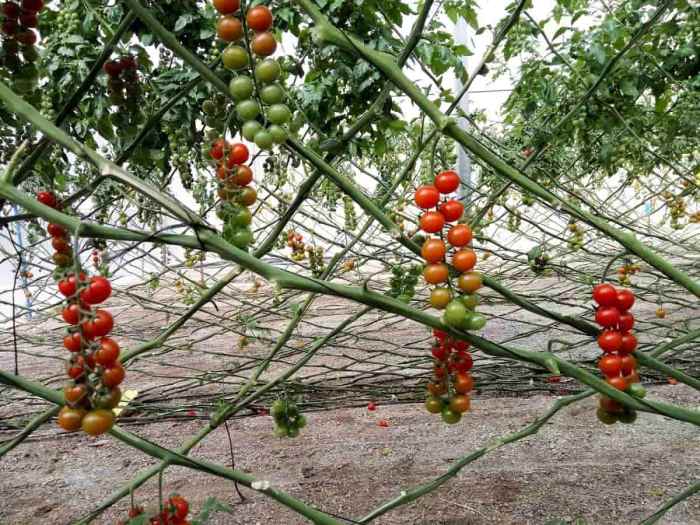
To maximize your tomato harvest, understanding the plant’s growth requirements and lifecycle is crucial. This knowledge allows you to provide optimal conditions for healthy growth and abundant fruit production.
Ideal Growing Conditions for Tomatoes
Tomatoes thrive in warm, sunny environments with well-drained soil. They require a minimum of 6 hours of direct sunlight daily for optimal growth and fruit production. Ideal temperatures range from 70°F to 85°F (21°C to 29°C) during the day and 60°F to 70°F (15°C to 21°C) at night.
Tomatoes prefer slightly acidic soil with a pH of 6.0 to 6.8. Soil should be rich in organic matter to ensure proper drainage and nutrient availability.
Stages of Tomato Plant Growth and Development
Tomato plants progress through distinct stages of growth and development, each with specific needs. Understanding these stages allows you to provide appropriate care and maximize yield.
- Germination:This initial stage begins when the seed sprouts and develops its first true leaves. This typically takes 7 to 10 days depending on temperature and moisture conditions. Proper watering and warm soil are essential during germination.
- Vegetative Growth:During this stage, the plant focuses on developing leaves, stems, and roots. It is characterized by rapid growth and the establishment of a strong root system. Adequate sunlight and nutrients are crucial for healthy vegetative growth.
- Flowering:Once the plant has established a strong vegetative structure, it begins to produce flowers. This stage typically starts 6 to 8 weeks after planting. Proper pollination is essential for fruit development.
- Fruit Development:Following successful pollination, the flowers develop into green tomatoes. The fruits grow rapidly, changing color from green to red, orange, or yellow depending on the variety. This stage requires consistent watering and adequate nutrients for optimal fruit size and flavor.
- Maturity:Once the tomatoes reach their full size and color, they are considered ripe and ready for harvest. This stage can last for several weeks, depending on the variety and growing conditions.
Tomato Plant Anatomy
Understanding the anatomy of a tomato plant is crucial for identifying areas of growth and fruit production.
- Roots:The roots anchor the plant in the soil and absorb water and nutrients. A strong root system is essential for healthy growth and fruit production.
- Stem:The stem supports the plant and transports water and nutrients from the roots to the leaves and fruits. It can be either determinate (limited growth) or indeterminate (continuous growth).
- Leaves:Leaves are responsible for photosynthesis, converting sunlight into energy for the plant. They also play a role in transpiration, regulating water loss.
- Flowers:Flowers are the reproductive parts of the plant, producing pollen and ovules. Successful pollination leads to the development of fruit.
- Fruit:The fruit is the edible part of the plant, containing seeds and flesh. Tomato fruits are technically berries, with varying sizes, shapes, and colors depending on the variety.
Optimizing Planting Techniques
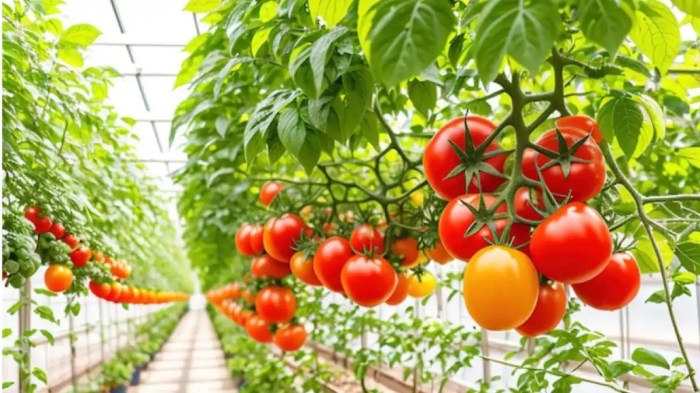
Planting your tomato seeds or seedlings correctly is crucial for maximizing your yield. By understanding the best practices for spacing, depth, and timing, you can create an optimal environment for your plants to thrive.
Choosing the Right Planting Method
Selecting the appropriate planting method depends on your available space, the variety of tomatoes you’re growing, and your personal preferences. Here’s a comparison of three popular methods:
- Direct Seeding: This method involves sowing tomato seeds directly into the garden soil. It’s suitable for warm climates with long growing seasons and for varieties that are less susceptible to transplanting shock. Direct seeding eliminates the need for transplanting, allowing the roots to grow undisturbed.
- Transplanting: This method involves starting tomato seeds indoors and transplanting them to the garden once they’ve developed a strong root system. Transplanting offers greater control over the timing of planting and allows you to start your tomato plants earlier in the season.
One way to boost tomato yields is by ensuring your plants have adequate support. You can use stakes or cages to keep them upright and prevent them from sprawling, which can lead to fruit rot. And while you’re thinking about plant support, you might be interested in learning how to grow bamboo cuttings in water, how to grow bamboo cuttings in water.
It’s a simple and rewarding process that can add a touch of natural beauty to your home. Once you’ve mastered the art of bamboo propagation, you’ll be ready to tackle any gardening challenge, including maximizing your tomato harvest!
- Vertical Gardening: This method involves growing tomatoes vertically using trellises, cages, or other support structures. Vertical gardening is particularly beneficial for small gardens or areas with limited space. It also helps to improve air circulation and reduce the risk of diseases.
Maximizing your tomato harvest starts with providing them the right conditions, including ample sunlight and consistent watering. But don’t forget about companion planting! While it can be beneficial, it’s crucial to avoid common companion planting mistakes that can actually hinder your tomato yields.
For instance, planting basil near tomatoes, while often recommended, can attract whiteflies that can damage your tomato plants. By understanding these potential pitfalls, you can ensure your companion planting strategy truly benefits your tomatoes and leads to a bountiful harvest.
Spacing Your Tomato Plants
Proper spacing between tomato plants is essential for adequate airflow, sunlight penetration, and root development.
- Determinate Tomatoes: These varieties grow to a specific height and produce their fruit all at once. They typically require 18 to 24 inches of space between plants.
- Indeterminate Tomatoes: These varieties grow continuously throughout the season and require more space to accommodate their sprawling growth habit. They typically need 24 to 36 inches of space between plants.
Planting Depth
The depth at which you plant your tomato seeds or seedlings can significantly impact their growth and development.
- Seeds: Tomato seeds should be planted about 1/4 inch deep.
- Seedlings: Transplant seedlings at the same depth they were growing in their pots. Be sure to bury the stem up to the first set of true leaves.
Timing Your Planting
The optimal time to plant tomatoes depends on your local climate and the specific tomato variety.
- Warm Climates: Tomatoes can be planted outdoors in warm climates as early as spring, once the soil temperature reaches at least 60°F.
- Cool Climates: In cooler climates, it’s best to start tomato seeds indoors and transplant them outdoors after the last frost date.
Nurturing Tomato Plants
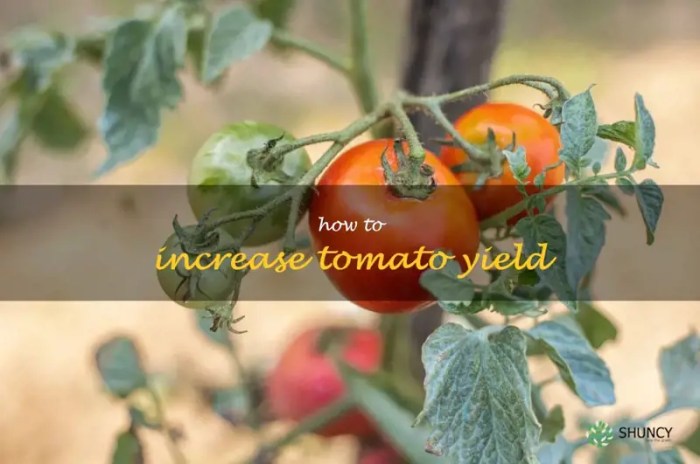
Just like any living organism, tomato plants require proper care to thrive and produce bountiful yields. This includes providing them with the right amount of water, nutrients, and support.
Watering Tomatoes
Watering is crucial for tomato plant growth and fruit production. Tomatoes require consistent moisture, especially during the flowering and fruiting stages. However, overwatering can lead to root rot and other problems. Here’s how to water tomatoes effectively:
- Water deeply and infrequently: Instead of frequent shallow watering, aim for deep watering less often. This encourages deeper root growth, making the plant more resilient to drought.
- Water at the base of the plant: Avoid wetting the foliage, as this can increase the risk of fungal diseases.
- Monitor soil moisture: Use your finger to check the soil moisture level. Water when the top inch of soil feels dry.
- Mulch around the plants: Mulching helps retain moisture, suppress weeds, and regulate soil temperature.
Providing Essential Nutrients
Tomatoes are heavy feeders, requiring a balanced supply of essential nutrients for optimal growth and fruit production. These nutrients can be provided through fertilization.
- Nitrogen (N): Promotes healthy foliage growth. Signs of nitrogen deficiency include yellowing leaves and stunted growth.
- Phosphorus (P): Essential for root development, flowering, and fruit set. Deficiency symptoms include poor root growth and stunted fruit development.
- Potassium (K): Plays a crucial role in disease resistance, fruit quality, and overall plant health. Potassium deficiency can lead to weak stems, leaf curling, and poor fruit development.
Fertilizing Tomatoes
There are several methods for fertilizing tomatoes, including:
- Granular fertilizers: These are applied around the base of the plant and slowly release nutrients over time.
- Liquid fertilizers: These are diluted in water and applied directly to the soil.
- Organic fertilizers: Compost, manure, and fish emulsion are excellent sources of nutrients and improve soil health.
Pruning Tomatoes
Pruning is an important practice for tomato plants, as it helps to improve air circulation, reduce disease risk, and direct energy towards fruit production.
- Removing suckers: Suckers are shoots that grow from the base of the plant or in the leaf axils. They compete with the main stem for nutrients and can reduce fruit production.
- Pruning indeterminate varieties: Indeterminate tomato varieties continue to grow indefinitely. Pruning these varieties involves removing suckers and limiting the number of stems to one or two to encourage larger fruit.
- Pruning determinate varieties: Determinate tomato varieties have a defined growth pattern and stop growing after a certain point. Pruning these varieties is less critical, but removing suckers can still improve air circulation and reduce disease risk.
Protecting Tomatoes from Pests and Diseases

Tomato plants, like any other vegetable, are susceptible to a variety of pests and diseases that can significantly impact their growth and yield. Understanding the common threats and implementing effective preventative measures is crucial to ensure a healthy and bountiful harvest.
Common Tomato Pests and Diseases, How to increase tomato yields
Identifying the signs of pest and disease infestation is the first step towards successful control.
- Tomato Hornworms:These large green caterpillars can quickly defoliate tomato plants. They are often found on the underside of leaves, and their droppings are easily visible.
- Tomato Leafminer:The larvae of this small fly tunnel through the leaves, creating winding, discolored trails.
- Tomato Russet Mite:These tiny mites feed on the underside of leaves, causing a bronze discoloration and stippling.
- Tomato Spotted Wilt Virus:This virus is spread by thrips and causes stunted growth, distorted leaves, and brown spots on the fruit.
- Early Blight:This fungal disease causes dark brown spots on the leaves and stems, which can eventually lead to defoliation.
- Late Blight:This fungal disease is a serious threat to tomato plants, causing dark, water-soaked lesions on leaves, stems, and fruit.
- Septoria Leaf Spot:This fungal disease causes small, dark spots with yellow halos on the leaves.
- Fusarium Wilt:This fungal disease affects the vascular system of the plant, causing wilting and yellowing of the leaves.
Preventative Measures
Taking proactive steps to prevent pest and disease infestations is essential for healthy tomato plants.
- Crop Rotation:Rotating tomato crops with other vegetables helps to break the disease cycle and reduce pest populations.
- Companion Planting:Planting certain companion plants, such as basil, garlic, and marigolds, can repel pests and attract beneficial insects.
- Organic Pest Control:Using organic methods like neem oil, insecticidal soap, and diatomaceous earth can effectively control pests without harming beneficial insects.
- Disease-Resistant Varieties:Choosing tomato varieties that are resistant to common diseases can significantly reduce the risk of infection.
- Proper Watering:Providing adequate water, but avoiding overwatering, helps to prevent fungal diseases.
- Good Sanitation:Removing and disposing of infected plant debris can help to prevent the spread of diseases.
Pest Control Strategies
| Pest | Natural Remedies | Chemical Options |
|---|---|---|
| Tomato Hornworms | Handpicking, Bacillus thuringiensis (Bt) | Insecticides containing spinosad or pyrethrin |
| Tomato Leafminer | Neem oil, row covers | Insecticides containing permethrin or malathion |
| Tomato Russet Mite | Insecticidal soap, horticultural oil | Miticide sprays containing abamectin or spirodiclofen |
| Thrips (Tomato Spotted Wilt Virus) | Neem oil, sticky traps | Insecticides containing spinosad or pyrethrin |
| Early Blight | Copper fungicide, baking soda spray | Fungicides containing chlorothalonil or mancozeb |
| Late Blight | Copper fungicide, potassium bicarbonate spray | Fungicides containing chlorothalonil or mancozeb |
| Septoria Leaf Spot | Copper fungicide, baking soda spray | Fungicides containing chlorothalonil or mancozeb |
| Fusarium Wilt | Disease-resistant varieties, crop rotation | No effective chemical treatment available |
Harvesting and Storing Tomatoes: How To Increase Tomato Yields
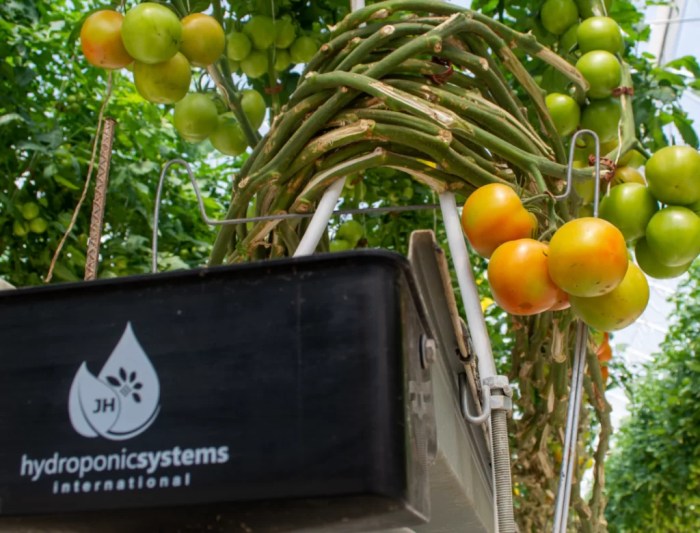
The pinnacle of your tomato-growing efforts arrives when your plants bear ripe fruit. Harvesting tomatoes at the optimal time and storing them correctly can preserve their flavor and extend their shelf life, allowing you to enjoy the fruits of your labor for weeks to come.
Determining Optimal Harvest Time
The optimal time to harvest tomatoes depends on the variety and intended use. For best flavor and ripeness, it is generally recommended to harvest tomatoes when they are fully colored and slightly soft to the touch. This indicates that the tomatoes have reached their peak sweetness and have developed their characteristic flavor profile.
- Ripe Tomatoes:Tomatoes that are fully colored and slightly soft to the touch are considered ripe. They are ideal for immediate consumption, as they have reached their peak sweetness and flavor.
- Green Tomatoes:While green tomatoes can be harvested and used in various dishes, they lack the sweetness and flavor of ripe tomatoes. They can be allowed to ripen on the vine or ripened artificially using various methods.
- Pink Tomatoes:Pink tomatoes are a stage between green and red. They can be harvested and allowed to ripen off the vine, but they may not develop the same intensity of flavor as fully ripe tomatoes.
Harvesting Methods
There are two primary methods for harvesting tomatoes: picking ripe fruit and allowing some to ripen on the vine. Each method has its own advantages and disadvantages.
- Picking Ripe Fruit:This method involves harvesting tomatoes when they are fully colored and slightly soft to the touch. It allows for immediate enjoyment of the freshest flavor and ensures that the tomatoes will not be damaged by pests or birds.
However, it requires more frequent harvesting and may not be suitable for varieties that are prone to cracking or bruising.
- Allowing Tomatoes to Ripen on the Vine:This method involves leaving some tomatoes on the vine until they are fully ripe. It allows for the development of the most intense flavor and sweetness. However, it requires careful monitoring to ensure that the tomatoes are not damaged by pests or birds.
Storing Harvested Tomatoes
Proper storage is crucial for maintaining the freshness and extending the shelf life of harvested tomatoes.
- Room Temperature:Ripe tomatoes can be stored at room temperature for up to a week. They should be kept in a cool, dry place, away from direct sunlight and heat.
- Refrigerator:For longer storage, tomatoes can be refrigerated for up to two weeks. However, refrigeration can affect the flavor and texture of tomatoes, making them less juicy and flavorful.
- Freezing:Tomatoes can be frozen for extended storage. They should be blanched for a few minutes before freezing to prevent them from becoming mushy.
Ending Remarks
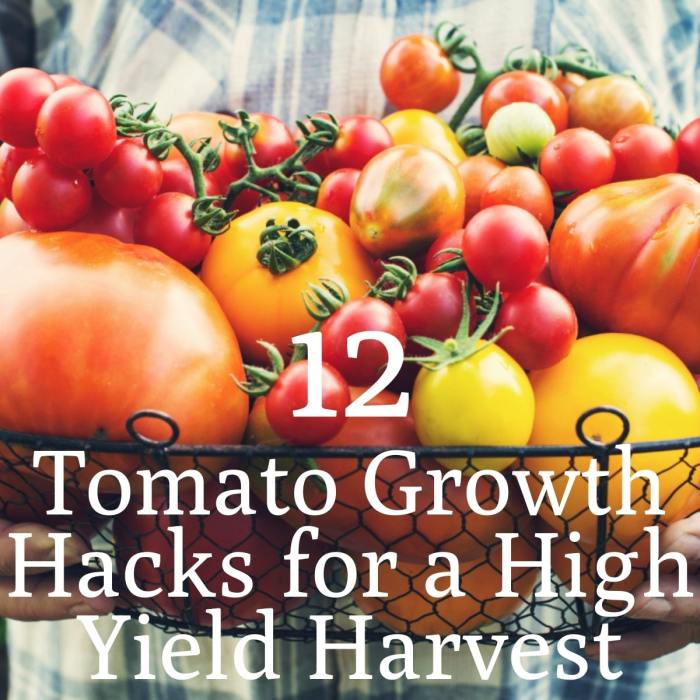
With a little knowledge and a lot of love, you can transform your garden into a tomato paradise. By understanding the needs of your tomato plants and providing them with the right conditions, you’ll be rewarded with an abundance of ripe, juicy tomatoes all season long.
So get ready to roll up your sleeves, get your hands dirty, and enjoy the fruits of your labor – literally!